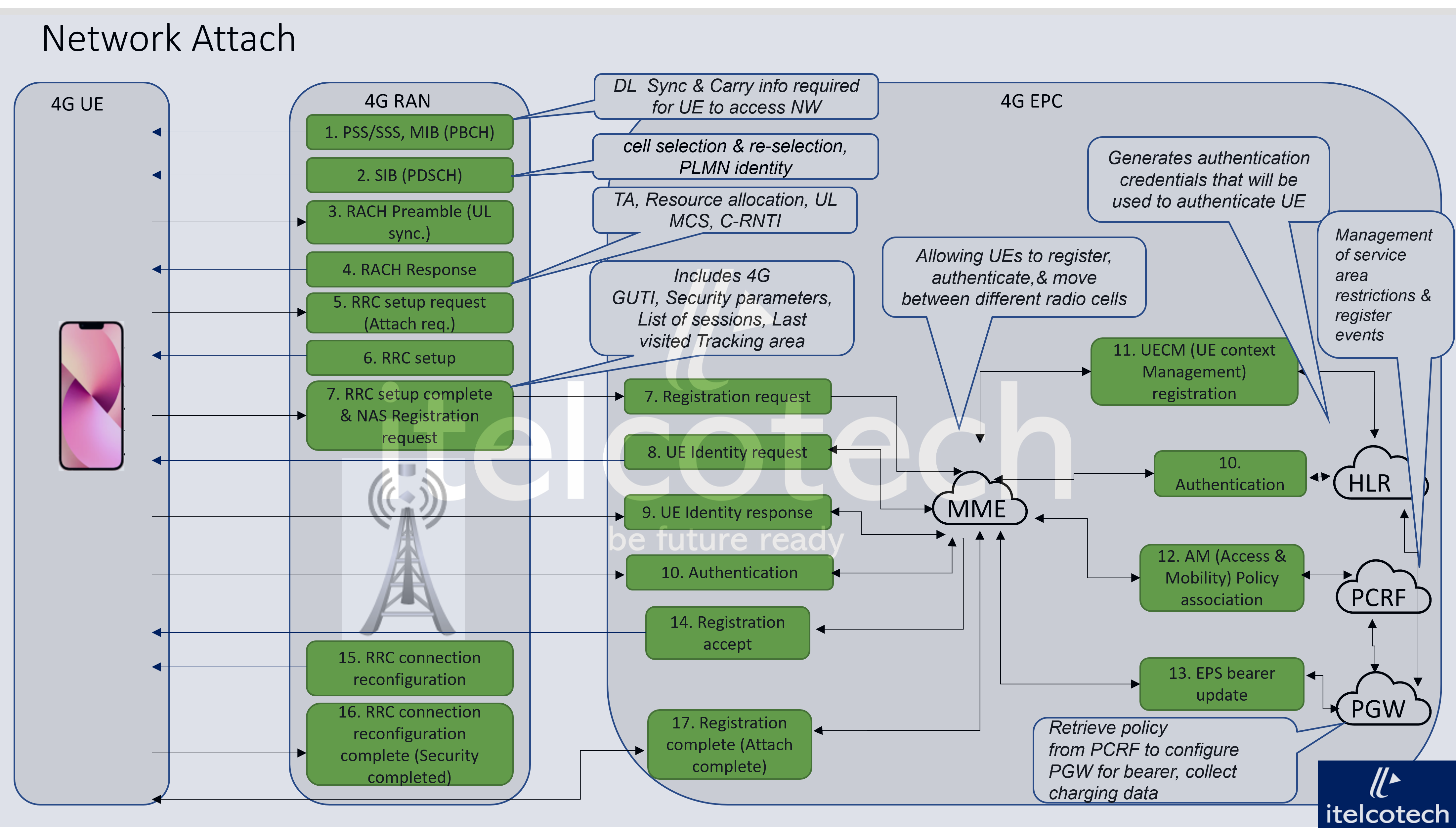
4G: Initial access call flow
byRahul Kaundalon
4G: Initial access call flow
UE needs to register with the network to get authorized to receive services, to enable mobility tracking and reachability.
In a case when UE powers ON, initial registration is performed. UE needs to select the network and determine to which public land mobile network (PLMN) to attempt registration.
· Initial access consists of functions where the cell search and acquisition are done at first allowing a UE to synchronize to the target cell. Primary synchronization signal (PSS) and Secondary synchronization signal (SSS) helps to establish DL synchronization.
· The system information (SI) from Base station helps UE to acquire the information needed to access the network through Master Information Block (MIB).
· Then System information block (SIB) in DL includes configurations for the UE, such as cell selection/reselection, random access parameters, PLMN identity and access class barring list. Once all criterions are met, cell is selected by UE.
· Initial access from UE to Base station starts from Random Access procedure. Base station decodes the preamble and UL synchronization is performed.
· Radio resource control (RRC) is setup and then an initial NAS message establish a signaling connection between UE and MME (4G Core NW or EPC).
Reference – 3GPP
👉This lecture is a part of 4G KPIs course and link for the course - https://www.itelcotech.com/learningpath/4g-architecture-design-call-flows-kpis-and-optimization
